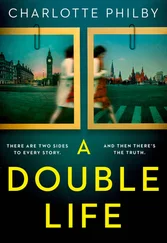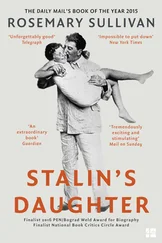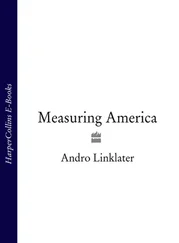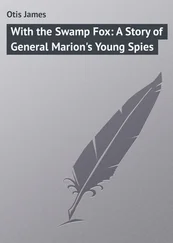When the Legion at last emerged from the undergrowth, they found themselves on the banks of the Maumee River, which flows northward into Lake Erie. Even Wilkinson, who had spent the previous days offering Wayne unsought advice on where they might be, was overwhelmed by the pristine beauty of the open countryside before them. “The River meandering in various directions thro a natural meadow in high cultivation & of great extent,” he wrote John Brown, “this meadow bounded by noble eminences, crowned with lofty timber on either side, with Indian Villages, scattered along the Eastern [bank] & the British flag [flying] upon the Western Bank; after a dreary Journey of more than 200 miles from the Ohio, thro an uncultivated Wilderness, [the scene] fills the mind with the most Interesting Emotions, and affords the most pleasing recreation to the Eye.”
Once more, Wayne ignored his second-in- command’s advice to make a rapid move against Blue Jacket and instead spent days erecting yet another armed camp, Fort Deposit, where the army stored its tents and wagons. With his soldiers refreshed and unburdened, Wayne then marched northeast along the Maumee River towards the wooded hillside from which Fort Miami dominated the valley. On August 19, the Legion’s scouts found the Indians’ abandoned camp. Again Wilkinson and other senior officers urged immediate pursuit and attack, the kind of rapid maneuver that the Legion was designed for, but again Wayne chose the safer option of setting up camp.
The delay allowed Blue Jacket to assemble a force of about thirteen hundred men, strengthened by some sixty Canadian militia, and to take up position between the Legion and Fort Miami with their center in a clearing in the wood where a cyclone had torn up the trees. Here, late on the morning of August 20, 1794, cautiously advancing in two columns behind a double screen of sharpshooters and light infantry, the Legion met the enemy they had spent eighteen months training to fight.
The outlying skirmishers were halted by a volley of shots and, minutes later, were driven back by a charge from the Indian position. Immediately Wilkinson formed the right wing of the First and Third Sub- Legions numbering about one thousand men into line. Taking cover, the attackers began firing from a range of 160 yards at the nearest troops, Wilkinson’s right wing. The two forces were packed into broken, boggy ground between the Maumee River on Wilkinson’s right, forest in front, and low hills covered in heavy undergrowth on the American left. As the entire Legion extended in line, Wayne ordered forward the cavalry at the rear of his force, the regular dragoons under Captain Robert Mis Campbell behind Wilkinson on the right, and Scott’s Kentucky volunteers on the left.
With drifts of musket smoke creating a heavy haze, and retreating riflemen hurrying back into the infantry lines while advancing cavalry came forward at speed, the Legion’s training paid its dividend. Instead of confusion, the line on the right wing opened to let Campbell’s horsemen gallop through, then reformed so that when Wilkinson gave the order to charge, the the broken defenders had no time to reform. Closest to the enemy, Wilkinson’s men became the front line of attack following up the cavalry to send the Indians’ left flank into headlong retreat.
From the clearing of torn- up trees that provided a defensive strongpoint, a counterattack under Little Turtle was launched against the Second and Fourth Sub- Legions on the left wing and in severe fighting threatened to turn them back. Here casualties were heaviest, and modern researchers have found the area most thickly strewn with spent buckshot and musket balls. But Little Turtle’s men were first outflanked by Wilkinson’s troops, then faced counterattack from the Legion’s left wing. In a maneuver practiced endlessly beforehand, the Second and Fourth Sub- Legions delivered a close-range volley and at once stormed toward the position in a roaring bayonet charge. The survivors fled, melting into the woodland so that the Kentucky horsemen, slowed by heavy undergrowth, never caught up, although the regular cavalry operating in open country along the riverbank pursued the enemy for two miles.
The Native Americans never had any doubt about the significance of what happened at the battle that became known as Fallen Timbers. “We were driven by the sharp ends of the guns of the Long Knives, and we threw away our guns and fought with our knives and tomahawks,” a Shawnee chief confessed. “But the Great Spirit was in the clouds, and weeping over the folly of his red children [because they] refused to smoke in the lodge of the great chief, Chenoten [Wayne].” Wayne, the victorious commander, made it equally clear in his report that “the enemy are . . . at length taught to dread—& our soldiery to believe— in the Bayonet.” Reporting his own casualties of thirty- three killed and one hundred wounded, Wayne estimated the enemy losses at “more than double” his own. But to James Wilkinson and others who examined the result more closely, the issue seemed less clear-cut.
Describing the battle to his most important ally in Congress, John Brown, now a senator for Kentucky, Wilkinson doubted the enemy had more than nine hundred troops and jeered at Wayne’s claims to have faced as many as two thousand. He criticized the Legion’s inability to force the British out of Fort Miami, blaming Wayne’s decision to leave the heavy artillery behind so that he only had a “little popgun Howitzer” to threaten its defenses. “We are Victorious & triumphant where ever we go,” Wilkinson declared in his best sarcastic tone. “We have been all the way to the British Post, we have beat thousands of Indians in a pitched Battle, we have commanded the British officer to abandon his Post, we have pillaged his gardens, insulted his flag, which we left flying, & yesterday got back to this place [Fort Deposit].”
Some of these were valid criticisms—modern estimates of casualties, for example, suggest the United States lost forty-six killed and dead of wounds against fewer than forty Indian deaths—but they led to a profoundly damaging conclusion. Wilkinson convinced himself that the western confederation had not really been defeated, and that another campaign would be necessary “should the Savages determine to prosecute the War & at this moment I see nothing to contradict the Idea of the prosecution.” All that had been achieved, in his view, was an immensely expensive punishment raid involving a few casualties, some destroyed villages, and many burned fields—“We have in truth done nothing which might not have been better done by 1500 mounted Volunteers in 30 days.”
His failure to appreciate the strategic impact of the battle had a long-lasting influence. Throughout his subsequent career as the senior military authority in four successive administrations, Wilkinson remained convinced that large forces of regular soldiers were an unnecessary luxury on the frontier. Militia and volunteers, he assured his political masters, could be just as effective.
In reality, Wayne’s victory at Fallen Timbers, demonstrating as it did the overwhelming armed might of the United States, combined with the construction of a chain of forts from the Ohio to the Great Lakes, changed the thinking of a generation of Native Americans. Leaders such as Little Turtle of the Miami, Cornplanter of the Seneca, Blue Jacket of the Shawnee, and even the volatile Oneida Red Jacket accepted the pragmatic consequence that their people had to find some accommodation to the inevitability of U.S. expansion.
So long as those Native Americans who remembered Fallen Timbers exerted influence, George Washington’s successors could build on the inclusive Indian policy that he and Knox had established. But one vital ingredient was the existence of an army large enough to overawe the native occupants of the land and restrain the movement of settlers who wanted to expand into their territory. The failure of Washington’s policy of assimilation was due not least to the activities of James Wilkinson.
Читать дальше












